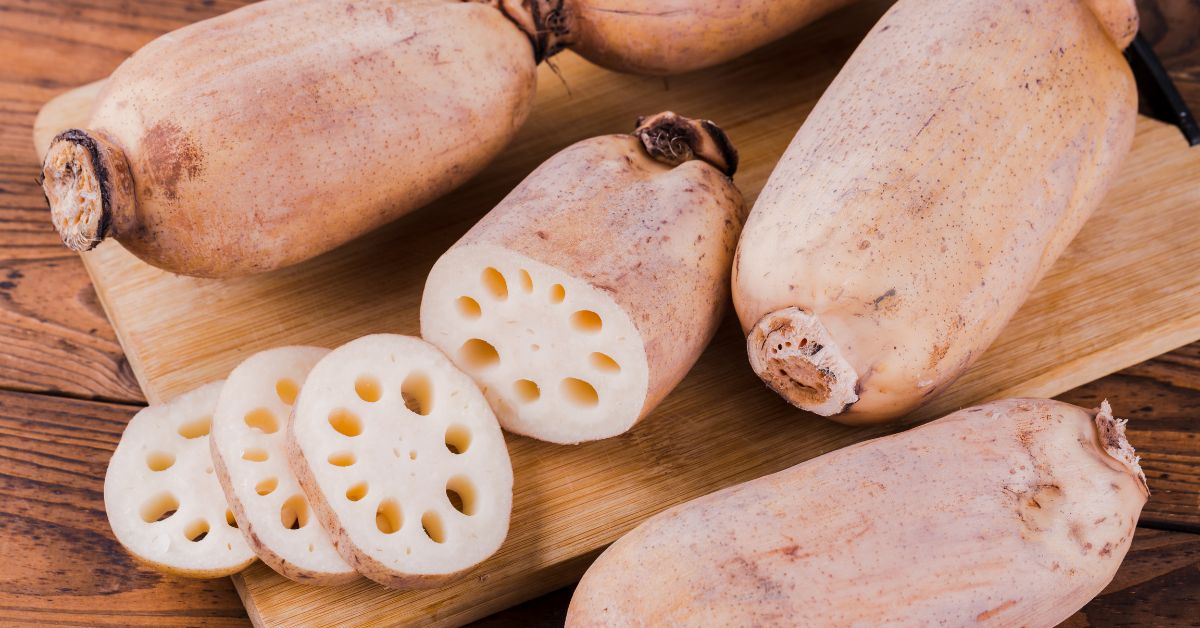China is a large and multifaceted as country, so it’s little surprise that its culinary legacy mirrors its diversity. The world knows of the classics, from stir-fried noodles and dumplings to Pekingduck and sweet and sour, but in truth, the locals enjoy delicacies that extend far beyond these staples. We’re talking about certain ingredients that can be strange or exotic to foreigners from afar, but are widely enjoyed in China (and often in nearby countries as well).
From an enigmatic stinky fruit to a symbolically rich vegetable, here are five fruits and vegetables you will have the chance to try when you live and study in China.
Durian: The King of Fruits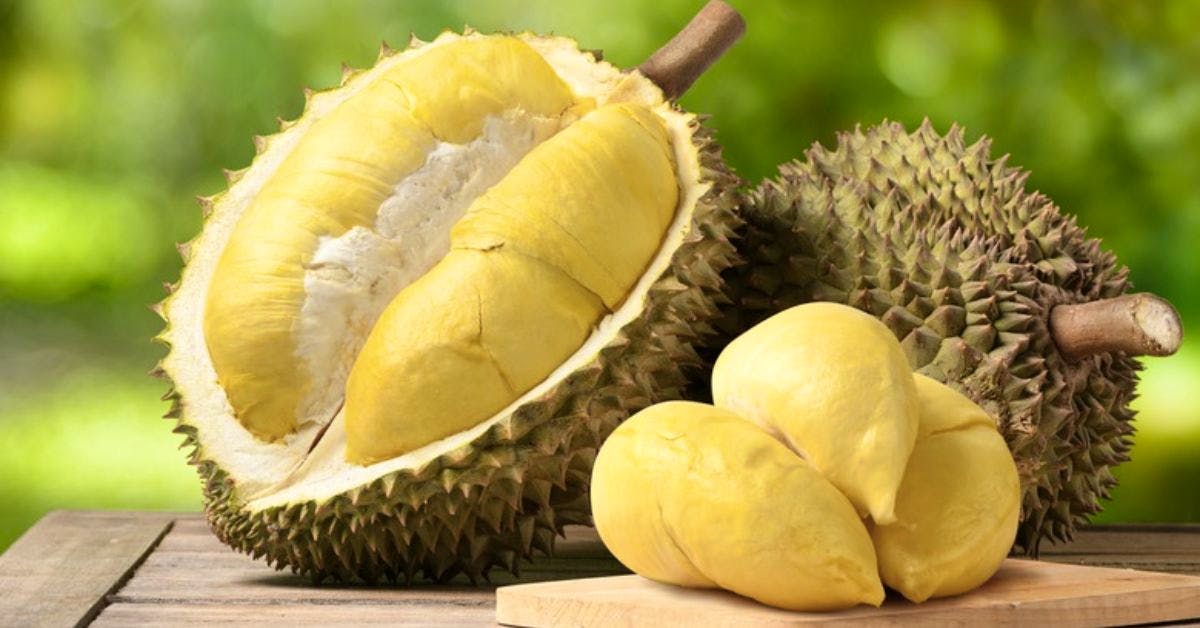
Durian, known as the “King of Fruits” in China is a large, spiky fruit that has a strong and distinctive smell. To some, the smell is pungent. Most people either hate durian or they love it. Under the thick skin lies a creamy, custard-like flesh that tastes like a mixture of banana, almond, and onion. As well as being incredibly nutritious, durian is said to have medicinal properties, such as lowering blood pressure, improving sex hormones, and killing parasites.
Durian is very popular in Southeast Asia, especially in Thailand, where it originated. In recent years, durian has also gained popularity and is widely available in China, especially in the southern regions where it grows best. It is easy to find durian and durian-flavoured products in supermarkets, markets, or street stalls.
How to Eat It
Durian is usually eaten fresh by cutting open the shell and scooping out the flesh with a spoon or your fingers. It is sometimes enjoyed with sticky rice or bread, or alongside salted eggy yolk or coffee to balance its sweetness. Chinese people also use it as an ingredient for desserts such as cakes, pudding ,and custard. Keep your eye out for the fruit swimming in chicken hotpot, deep fried into fritters, or pickled with fish.
Lotus Root: The Beautiful Vegetable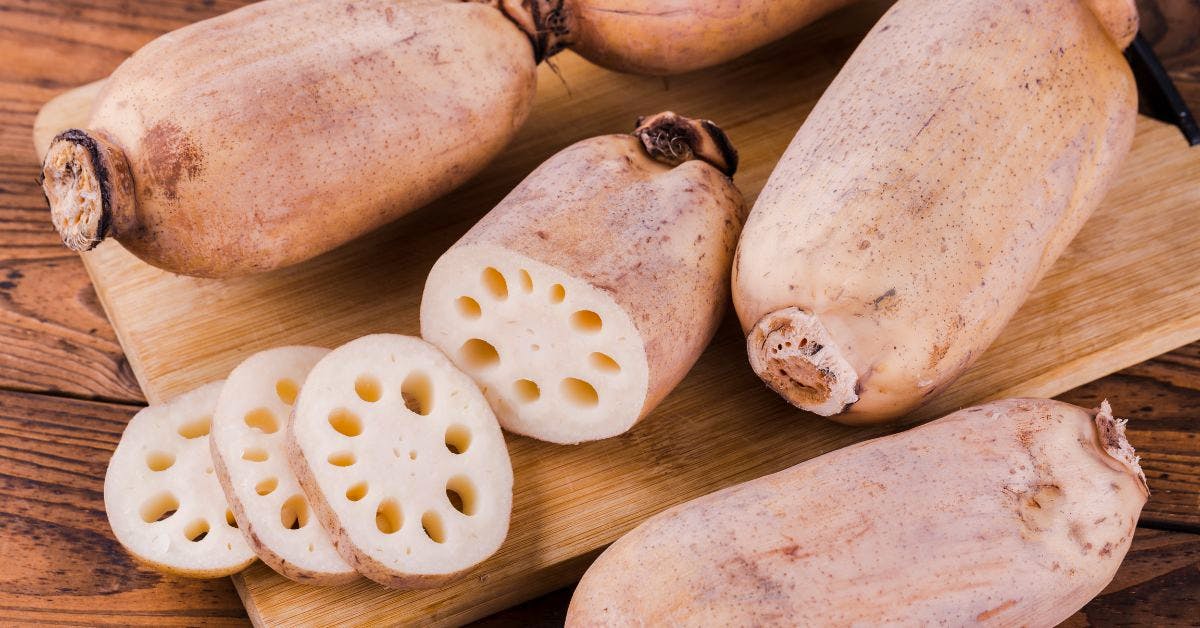
The lotus root is the edible stem of the lotus flower, which is a symbol of purity and beauty in China. With a crunchy texture and a mildly sweet taste, it can be eaten raw, cooked, or pickled. It is often sliced and stir-fried with meat or vegetables, or made into soups or salads. This vegetable is rich in dietary fiber, vitamin C, iron, and potassium. It can help improve digestion, blood circulation, immunity, and skin health.L otus root represents harmony, happiness, prosperity, and longevity in Chinese culture, which is why you will often see it during festivals or special occasions, such as the Lunar New Year or weddings.
How to Eat It
Lotus root can be eaten raw by peeling off the skin and dipping it in vinegar or sugar. It can also be cooked in various ways, such as stir-fried with meat or vegetables, boiled with sugar or honey, stuffed with glutinous rice, or made into soup with pork ribs. Lotus root can also be pickled with vinegar or salt to preserve its freshness and flavor.
Bitter Melon: The Bitter-Sweet Vegetable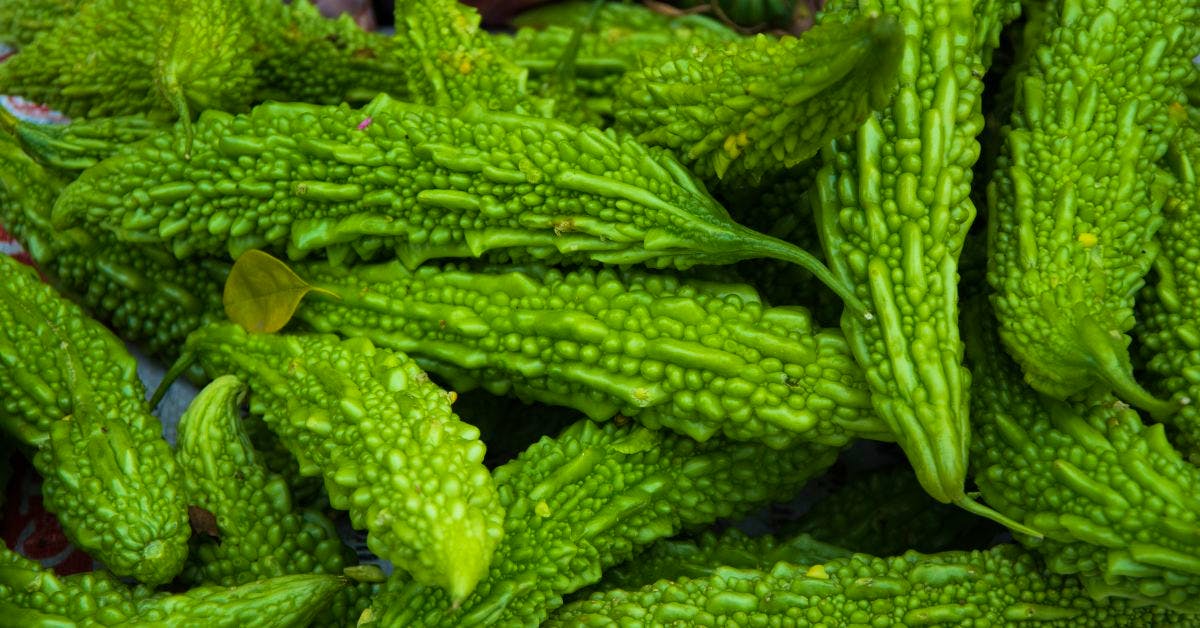
Bitter melon is a green, warty vegetable that looks like a cucumber with bumps. As its name suggests, bitter melon has a very bitter taste that can be hard to swallow for some people. However, bitter melon is also very beneficial for health, especially for people with diabetes. Bitter melon contains compounds that can lower blood sugar levels, regulate insulin production, and prevent complications from diabetes. It’s also known for its liver detoxification properties, and abilities to fight infections and reduce inflammation. Some people use it for weight loss since it suppresses the appetite and boosts metabolism.
How to Eat It
Bitter melon can be cooked in various ways to reduce its bitterness and enhance its flavor. Bitter melon can also be eaten raw by slicing it thinly and soaking it in water or vinegar, or made into a tea. Common Chinese dishes feature bitter melon scrambled with eggs, stir-fried with meat and black beans, stuffed with minced pork then steamed or braised, and cooked into a hot and sour soup.
Bamboo Shoots: The Versatile Vegetable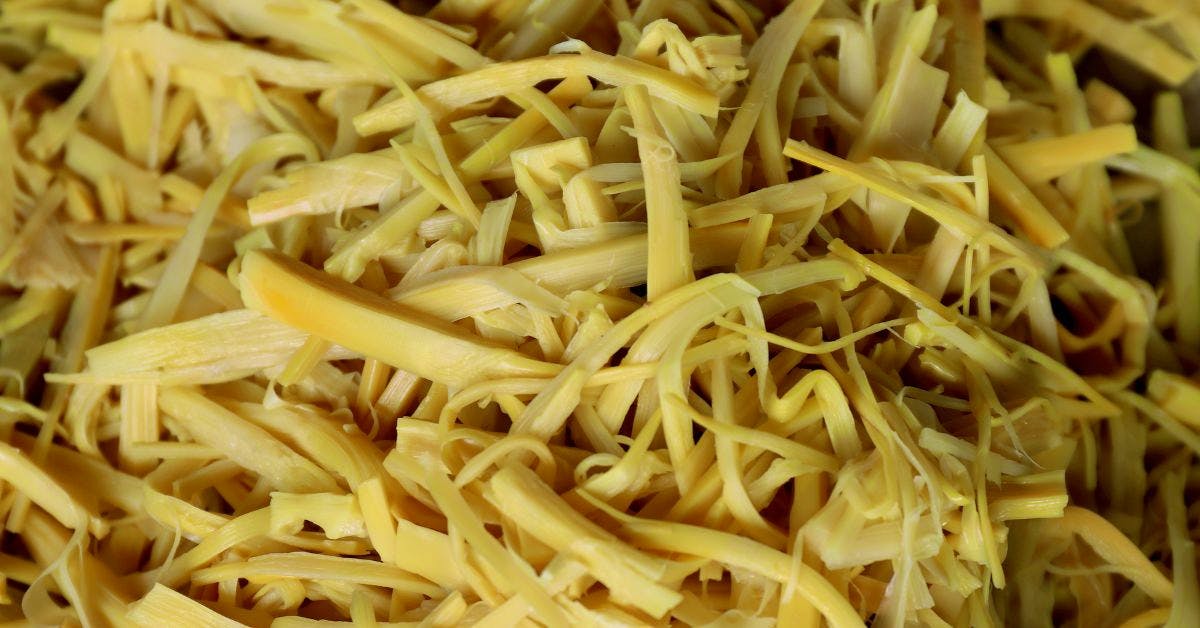
Bamboo shoots are the young sprouts of bamboo plants that grow rapidly in spring. They have a crisp and tender texture and a mild and nutty flavor that complement a wide range of dishes They are very versatile and can be used in many dishes, such as soups, salads, stir-fries, dumplings, or noodles.
They are a good source of fiber, vitamins, and minerals, and can help lower cholesterol levels, boost metabolism, and prevent constipation.
Considered a delicacy and a symbol of good luck and prosperity, bamboo shoots are widely cultivated and consumed in China, especially in the eastern regions.
How to Eat It
Bamboo shoots can be eaten fresh or canned, but they need to be peeled and boiled first to remove their bitter taste. In China, you’ll find it in stir-fries, sous, and salads. It is also braised with sugar, soy sauce, rice wine, and star anise to make a caramelized dish.
Chinese Yam: The Slippery Vegetable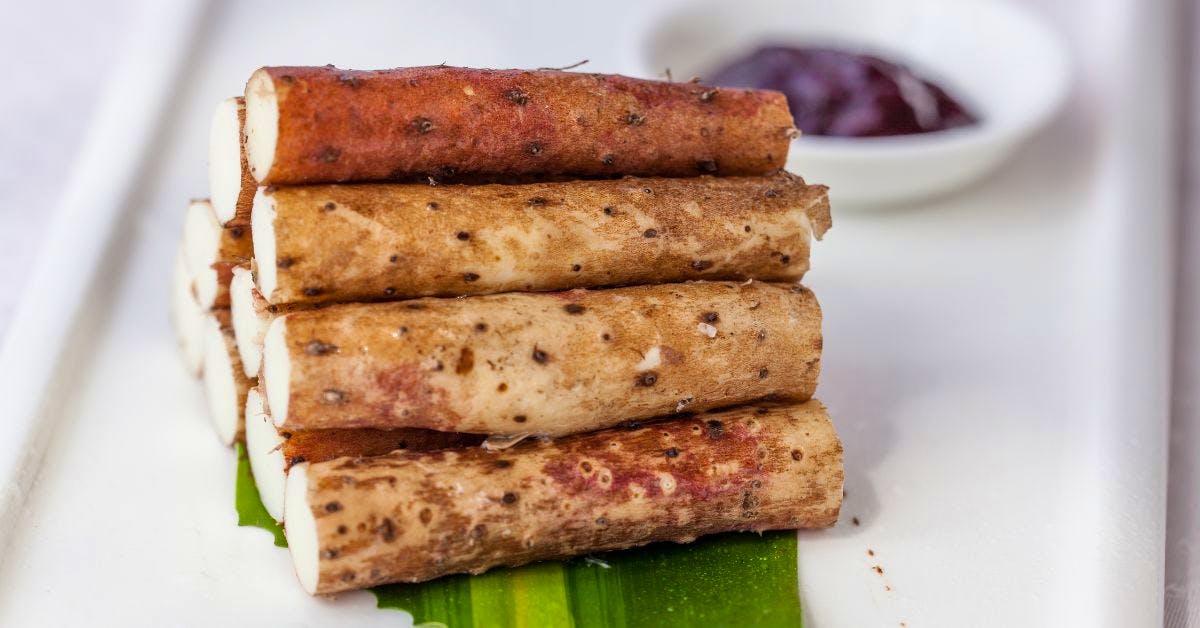
Chinese yam is a type of tuber that has brown skin and white flesh. It has a slimy texture that makes it slippery to handle, and a sweet and starchy taste that resembles potato or chestnut. is recognized for its potential to enhance digestion, boost immunity, and provide essential vitamins and minerals, and can help treat coughs, asthma, diarrhea, diabetes, and menopause symptoms. Chinese yam is widely grown and eaten in China, especially in the northern regions where it is native. It is often used in traditional Chinese medicine as a tonic herb that can balance the yin and yang energies of the body.
How to Eat It
Chinese yam can be eaten raw by peeling off the skin and shredding it with vinegar, sugar, salt, and sesame seeds to make a salad. In Chinese cuisine, it is enjoyed stir-fried with meat or vegetables and seasonings, steamed with sugar and vegetable oil to make a pudding, boiled with pork, carrots, goji berries, and ginger to make a soup, or mashed with flour and eggs to make pancakes.
Study Abroad in China
These are just some of the unusual fruits and vegetables you can find in China. There are many more to explore and enjoy if you are adventurous enough to try them. China is a country that has a lot to offer for prospective university students, not only in terms of food, but also in terms of education, opportunities, and diversity.
If you are interested in studying in China, you can apply to various universities through our website. Don’t miss this chance to broaden your horizons and taste the wonders of China.
- Prepare for the Future with Artificial Intelligence or Computing Programs at United International College (UIC) - December 10, 2024
- Juggling Life’s Commitments: Tips from a TIEMBA Alumna and Working Mother - October 19, 2024
- How TIEMBA Alumni are Making an Impact in the World - October 3, 2024
